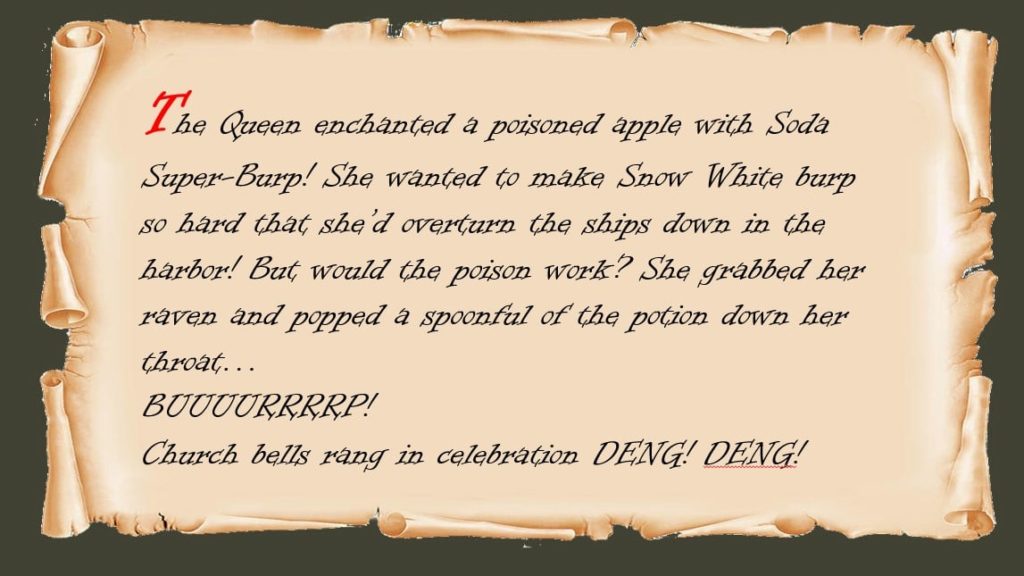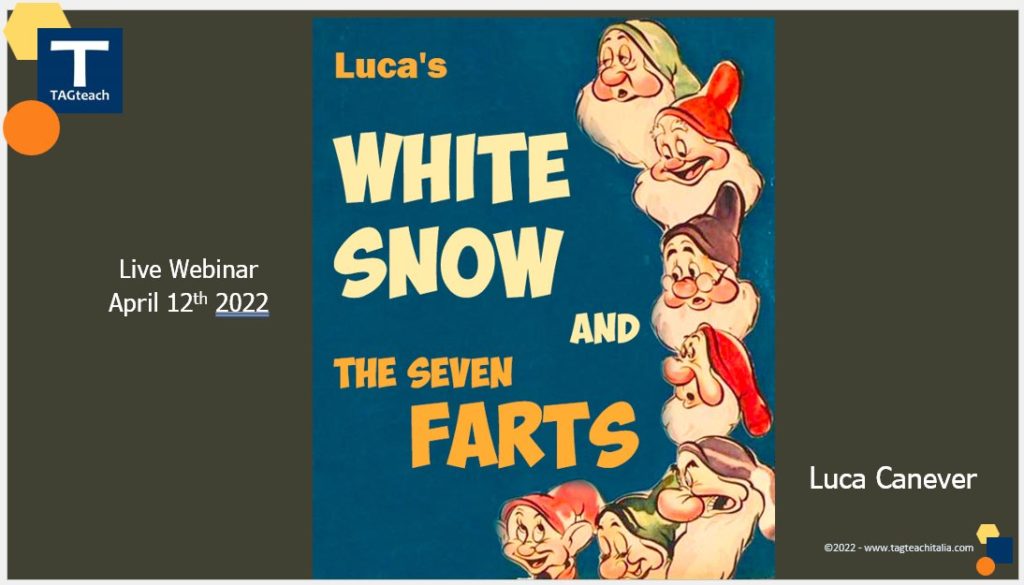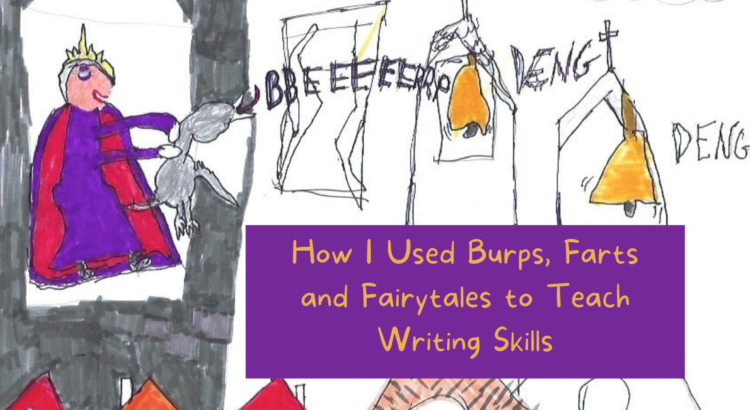By Luca Canever, TAGteach Faculty
Everyone knows from their own experience that it’s not fun to do things badly. A certain amount of effort is required to gain enough skill with a new activity in order to get to the point that you start to see some progress and to enjoy the activity for it’s own sake. For some of us, for some activities, the motivation of future success is enough to get us past the initial frustration in the learning process where there is more failure than success. For others, especially kids who can’t understand why they need to learn something hard in school, there just seems no point in putting forth the effort to practice and get better. Here is my story about overcoming this problem of motivation and reinforcement with one student. I hope it helps you to discover how to instill joy in the learning process for your learners (or even yourself!).
My Goal
When I created “Whitesnow and the Seven Farts” I had one goal in mind: to increase my student’s speed and accuracy in writing. Mastering the skill of writing will have huge benefits to him in many areas of his life, but he doesn’t understand this. From his point of view writing is hard and boring and he’s not good at it and it’s not fun to practice. In addition to his struggle and even refusal to work on his writing I had the drawback of teaching online due to COVID-19 protocols and so I had to find a way to make it fun and motivating otherwise he could just ignore me completely.
My Steps to Effective Teaching
I have discovered an effective way to teach under these circumstances which I want to share with you since I know that all teachers (and parents) will at some point find themselves in a similar situation with a struggling learner who will not find the argument: “It’s for your own good!” compelling. Here are the steps:
- Engage in activities that allow you to discover your learner’s interests and what they find to be fun.
- Set specific learning goals.
- Set specific practice goals that allow for progress measurement.
- Design activities that incorporate the learner’s interests into the practice sessions in a fun way and that allow for a high rate of positive reinforcement.
- Enjoy the ride
My Teaching and Learning Goals
Since I have been working with this student for four years I have a good amount of information about him: he loves to draw, he finds farting and burping fun; he does not like to write too much and absolutely not if someone is telling him what to write. Also he finds writing frustrating because he does not have a clear understanding of how and where to write letters and words in cursive. From my point of view, as a teacher, I need to be able to dictate words and sentences in order to measure his performances and track his learning. I know that the faster he gets, the more fluent he’ll be, and the easier it will be for him to find writing a pleasant activity. I need good practice.
Burps and Farts and Drawing Pictures

But how to get him to do the practice it will take to reach fluency when he’s frustrated and struggling? He needs to be fluent in writing in order to get satisfaction from it, but he can’t be fluent unless he wants to practice. He doesn’t want to practice because he doesn’t see the point since he’s not fluent enough to get any joy from it. I’m sure every teacher and parent who has tried to teach something (or even learn something new themselves) has encountered this hurdle. How do you motivate and provide opportunities for the positive reinforcement that is essential for learning, when the learner does not have the basic skills required to feel successful? What if you have a student who doesn’t understand or doesn’t care about the long term and seemingly far off benefits of learning the critical skill you’re trying to teach?
Whitesnow put every piece of this behavioral puzzle at place. I tell him to write about a burping princess, or farting little pigs and then he can write the storyboard of the tale. When he writes I do my best to have fun together (I will show you a video of one of our sessions in a webinar – see below for webinar information). I have designed specific materials to make sure that he knows where to write and I have used TAGteach with tag points and Short Phrase Coaching to teach him new skills. using TAGteach lets me deliver immediate positive reinforcement so that he feels successful at all steps along the way, even if his writing is not yet fluent enough for it to be reinforcing on it’s own. Whitesnow gives him the opportunity to practice his writing skills over and over again with lots of success. From our practice I record data, that I use with Precision Teaching to understand the effect of my program on his behavior.
Learn More at a Webinar

During the webinar, I will talk more in detail about my program, and how we can develop better teaching programs if we set specific goals and provide our students with fun and success along the way.
Achieve all of this and what is left for we teachers is to enjoy the ride.
Note that after the date of the live webinar, the recording will be available
